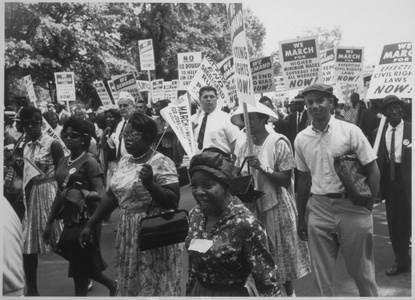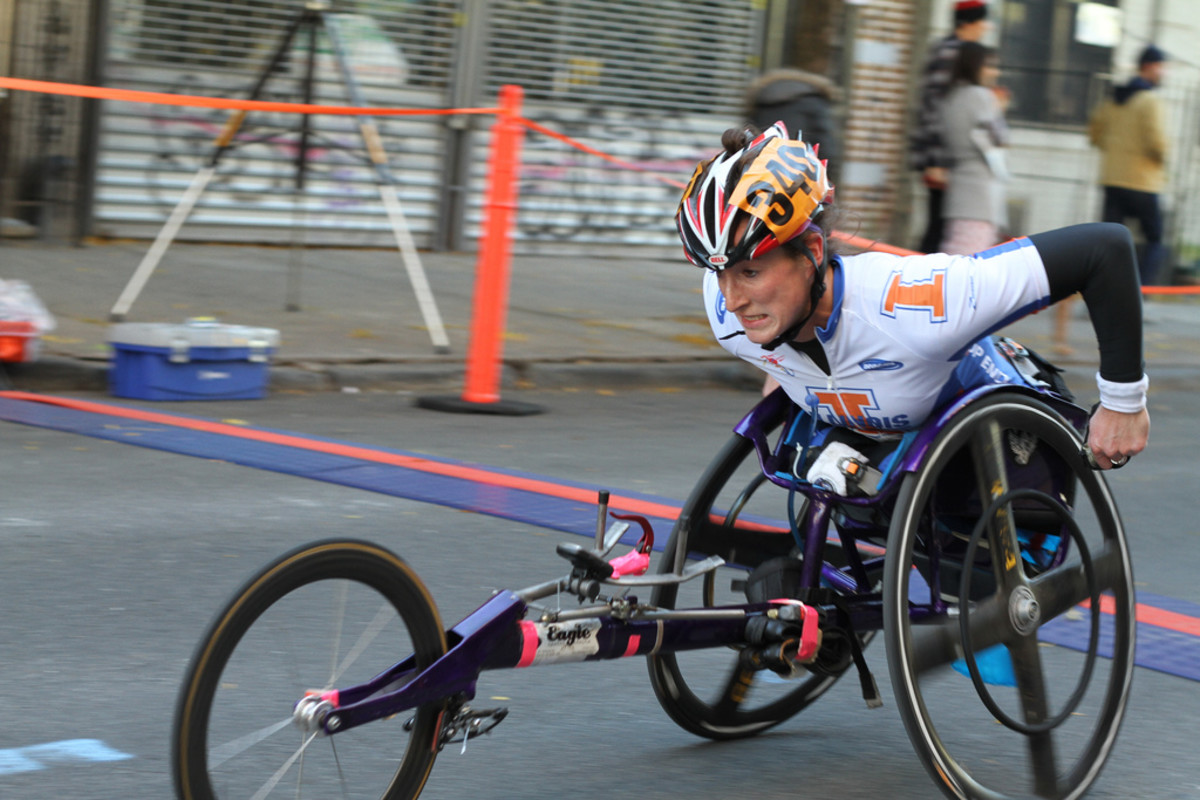The Olmsted Decision: Freedom to Choose Where You Live
The Olmsted Decision is a Supreme Court case that recognized the right of individuals with disabilities to make their own choices about where they choose to live. I'm not referring to cities or states or countries. I mean the difference between living in an institution/nursing home or living in a community in one's own home.
The official term is "community-based care."

Suing For Freedom
In the early 1990s, two women at a psychiatric hospital in Georgia, sued the state for the right to be treated outside of an institutional environment. They wanted to live in the community and their doctors agreed that they could be treated outside the hospital quite effectively. The state of Georgia, which was footing the bill for their care disagreed.
The women's suit claimed that Georgia was violating Title 2 of the Americans with Disabilities Act which prohibits discrimination against people with disabilities in the provision of public services.
The Supreme Court of the United States agreed with them. It issued the Olmsted Decision in 1999. The court found that the state of Georgia could reasonably provide services to these women in the community without unnecessarily burdening its resources or the funds allotted to care for other people in the state with mental disabilities.
Learn about the people who got us here.
Get My Book on Adult Diapers

All Types of Disabilities
While the decision itself concerned people with psychiatric or developmental disabilities, the court indicated that it should be construed to include all people with all types of disabilities who were eligible to receive public services.
So, if a person chooses to receive services in the community and medical professionals agree with that decision, the state must make the same public services it provides in institutions available in the community. Does this mean that all the nursing homes and other long term care institutions must close down? No. Does it mean that everyone who wants out will get out? No.
But for someone like me, if I need assistance getting dressed or preparing meals, which I do, and I am eligible for public services, which I am, then I don't have to go live in a nursing home to get that help. Instead, it's my right to live in my own home in my neighborhood and still get the assistance. There are a lot of people like me out there. Oh, they may not have my particular disability or need the same type of care I do but they are capable of living in the community with a little help.
The Numbers
Currently, about 20 percent of the general population of the United States has some type of disability. One in 10 has a severe disability which seriously interferes with their capacity to live independently. The ADA defines a disability as any condition that interferes with the activities of daily living. Your ability to work, breath, walk, drive, care for yourself, perform manual tasks, see, hear, or think.
I'll bet almost everyone knows someone, either a family member or friend, who has a disability. I'll also bet, that almost everyone knows someone who has had to go into a nursing home or other type of institution because they could not get the care they needed at home.
As often as not, that person probably didn't need total medical care like someone in a coma or coming to the end of a terminal bout with cancer. They just couldn't continue to live without some assistance. Maybe they needed help managing their money or preparing meals or any number of the other little things we do each day.
Live Long Enough
Statistics predict that almost everyone, if they live long enough, will become disabled in their lifetime. Most disabilities are acquired. That means you're not born with them but you find them along the way. Some come from injuries or disease but most come on us as we age. If you were born between 1946 and 1964 then you're a baby boomer and one of the most studied demographic in history.
The oldest of the baby boomers are now into their 50s. They'll hit 65 in 2011. The average life expectancy of this group is the mid '80s which means a lot of us will make it into our 90s. Right now, people over 65 makeup about 13 percent of the population of the United States. By 2020, one in six Americans will be over 65. It's estimated that in 40 years there will be over 14 million Americans aged 85 or better.
Individuals acquire disabilities as they age. And really, we all know this. The older we get, the harder it is to do stuff. Move, lift, breath, work. Back pain here and a stiff hip there.
Over time, those aches and pains accumulate and can become debilitating. In fact, most people who consider themselves severely disabled are elderly. The longer we live, the more help we will require just to function in our everyday lives. This is why the Olmsted Decision is so important and has the potential to affect millions and millions of lives. Who of us would choose to sell all our belongings and move into an institution if there were another alternative?
$$$
Luckily, there is Olmsted and community-based care. The wonderful thing about Olmsted is that in addition to empowering people to live the lives they choose, it also makes good financial sense. Believe it or not, it's actually cheaper to provide services in the community than in institutions.
Most long-term care and home health-care services are covered by Medicaid and Medicare with the largest chunk going through Medicaid. Medicaid is funded jointly by the state and federal government. Currently, it requires about 20 percent of a state's budget.
On average, it costs $55,000 per person to maintain an individual in a nursing home or institution. The average cost for community-based services is $6,500 to $15,000 per person.
Why the difference? First, people who live the community generally get more assistance from family and friends. With so many two income families, caretakers, who are usually female, are no longer available 24 --7, the way they were 40 or 50 years ago. Relatives are in a position of being able to help out some but not monitor an elderly person daily. However, they can generally offer some care. That care along with supplementary assistance from outside the home can often fill the needs a senior citizen might have.
States
The perfect system would be one that allows people to access their personal resources and still receive some help from the state. People with disabilities of all kinds can stay in their homes and still receive care for less money than we are currently spending by putting them in institutions.
Since both the Olmsted Decision and most of its financing, Medicaid, reference states, it's up to each state in the country to determine how best to provide community care.
In 2002, Gov. Mark Warner of Virginia commissioned the Olmsted task force. This group included over 70 individuals from almost every state agency and service provider in the state as well as many individuals with disabilities.
Most states in this country have either produced similar reports or are working on them. Information about your state should be available on its official website. If not, start contacting your state representatives and local independent living centers.
Olmstead Reports
The final report in Virginia was issued several years ago and tops out at 85 pages. It's a little like reading stereo instructions. Some say the report is comprehensive while others claim it didn't go far enough. Without going into mind numbing detail here, let me summarize it for you.
Basically, every state agency that services people with disabilities be they young or old, cognitively impaired, physically disabled, or sensory impaired must begin to think in terms of integration into the community rather than segregation from it.
It's not enough to consider personal care assistance but they must look to housing accessibility, transportation availability, opportunities for work and education. At the core of all planning and program development must be the desires of the person with the disability.

Commonplace
Freedom to choose one's destiny should not be limited to the able-bodied. If some of this sounds familiar, that's because you've heard the same requests, pleas, and demands for autonomy and respect in every civil rights movement since the 1950s.
Obviously, the number of older Americans is going to increase but the number of young Americans with disabilities is also going to increase as well. Medical care is improving radically. Every war has that effect. Young people come home injured and emergency and rehabilitation medicine improves. Those who might have died 10 years ago from an accident or injury are surviving now.
People with disabilities are going to become commonplace. There must be a way to accommodate all of us in society and yet avoid bankruptcy. The Olmsted Decision and community-based care gives us a place to start.
Note: I expect the new census figures will show an increase in all types of disabilities. The information used for this article came from the 2000 census.
- Virginia Still Is Playing Catch-Up in Disability-Rights Arena | Richmond Times-Dispatch
On June 22, 1999, the U.S. Supreme Court issued its landmark decision in Olmstead v. L.C. Lets all take a minute tomorrow and celebrate the 10-year anniversary of a monumental but little-known breakthrough in the recognition of rights of people with - Implications of Supreme Courts's Olmstead Decision Are Still Unfolding from The GAO
- One Community - The Olmstead Project Web Site
Former Governor Kaine recently created a Health Reform Commission comprised of leading voices from all facets of both the public and private sectors to recommend effective ways to reform and strengthen healthcare in Virginia.
Photos
Hallway photo from http://www.flickr.com/photos/allard1/
Photograph of the Civil
Rights March on Washington, 08/28/1963 From http://www.flickr.com/photos/usnationalarchives/










